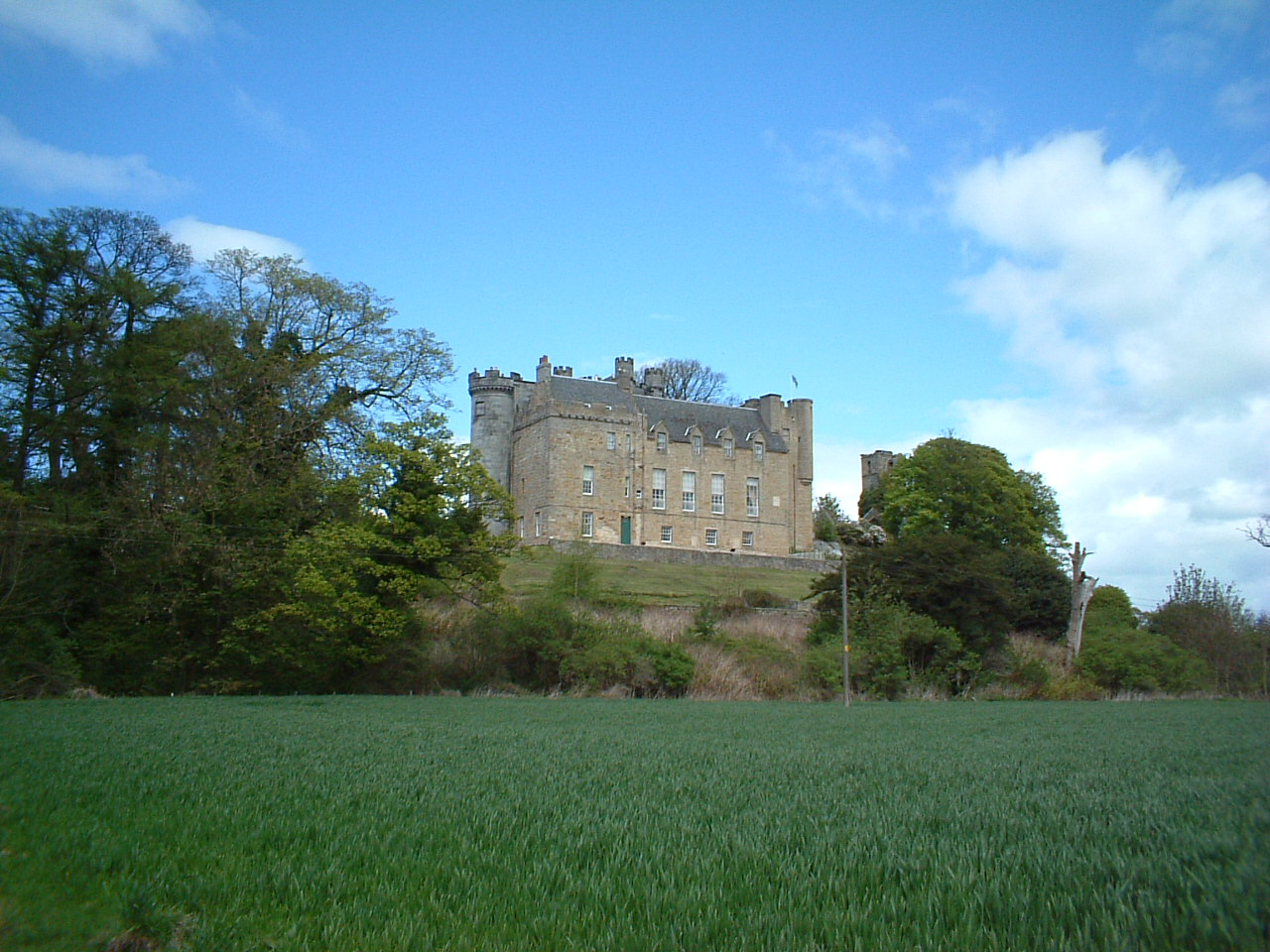Airth Castle

Airth Castle stands on a hill to the south east of the village and can be seen as a landmark for miles around.
The earliest part of the castle is a square tower, known as Wallaces Tower, dated at around 1488, and can be seen at the left in the above picture. The tower to the right with the turrets is known as the Bruce Tower.
An earlier castle on the site,believed to have been of wooden construction and later destroyed by fire, was sacked by William Wallace when 100 Englishmen held his uncle, the priest of Dunipace, prisoner within it. Wallace's guerrilla force stormed the castle and killed Thomas Weir, the English captain, and his entire garrison.
The ruins of Airth Old Parish Church can be seen in the trees to the right of the castle,(in the picture above). Unfortuately the ruins are in such a bad state of disrepair that it has been fenced off as a safety precaution. The old church building is sited at the most advantageous point on the hill, a point that would have been the best defensive part of the hill. It seems strange that the castle would be sited, as it is, in the less defensible position. The conclusion that can be taken from this is that the church was here before the castle.
In the earliest times of the church the dead were intered inside under the floor and the congregations had to suffer the noxious and unhealthy odour of rotting bodies beneath their feet. The Reformation in the 16th century prohibited burial inside the body of the kirk and the wealthier families sought a means to get around this. The solution they came up with was to construct side aisles onto the naves at their own expense. As these were not strictly speaking part of the church they were able to bury family members in them. The date stone on the gable of the Elphinstone Aisle shows it's construction to be 1593, the Bruce Aisle is dated at 1614 and directly opposite can be found the Airth Aisle. Another aisle was the Letham Loft but this structure is no longer visible as it has since been demolished.
A castle has existed here since 1128 when King David 1 granted it to Holyrood Abbey.
The castle has been added to over the centuries, the tower was extended to the east in the early 16th century, a further wing added in 1581, another wing to the west end was demolished by 1762 and the present frontage and the interior was greatly altered in 1810.
Airth Castle is now a prestigous hotel and Spa Resort and as such it provides an excellent base from where to explore this historic area..